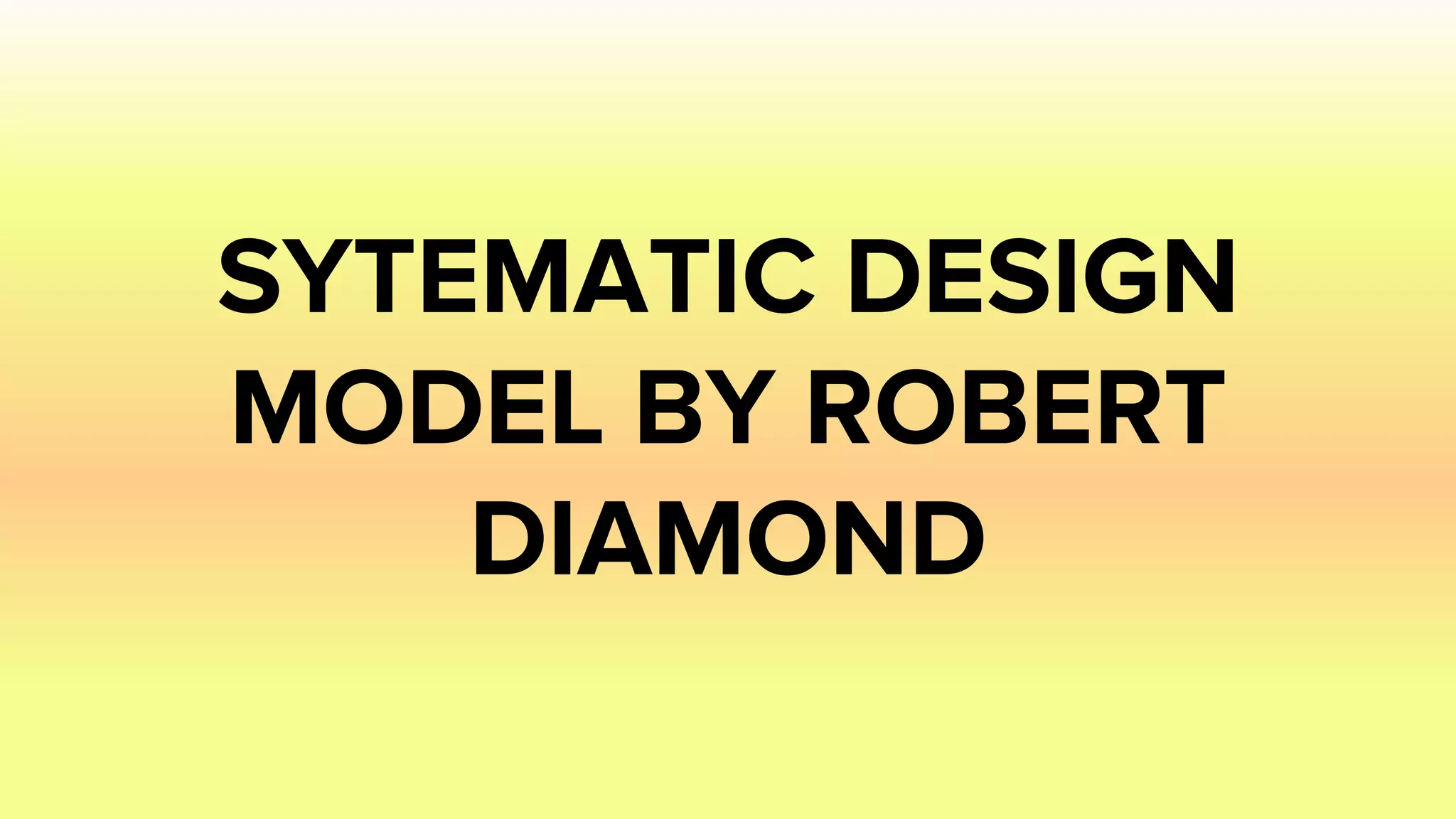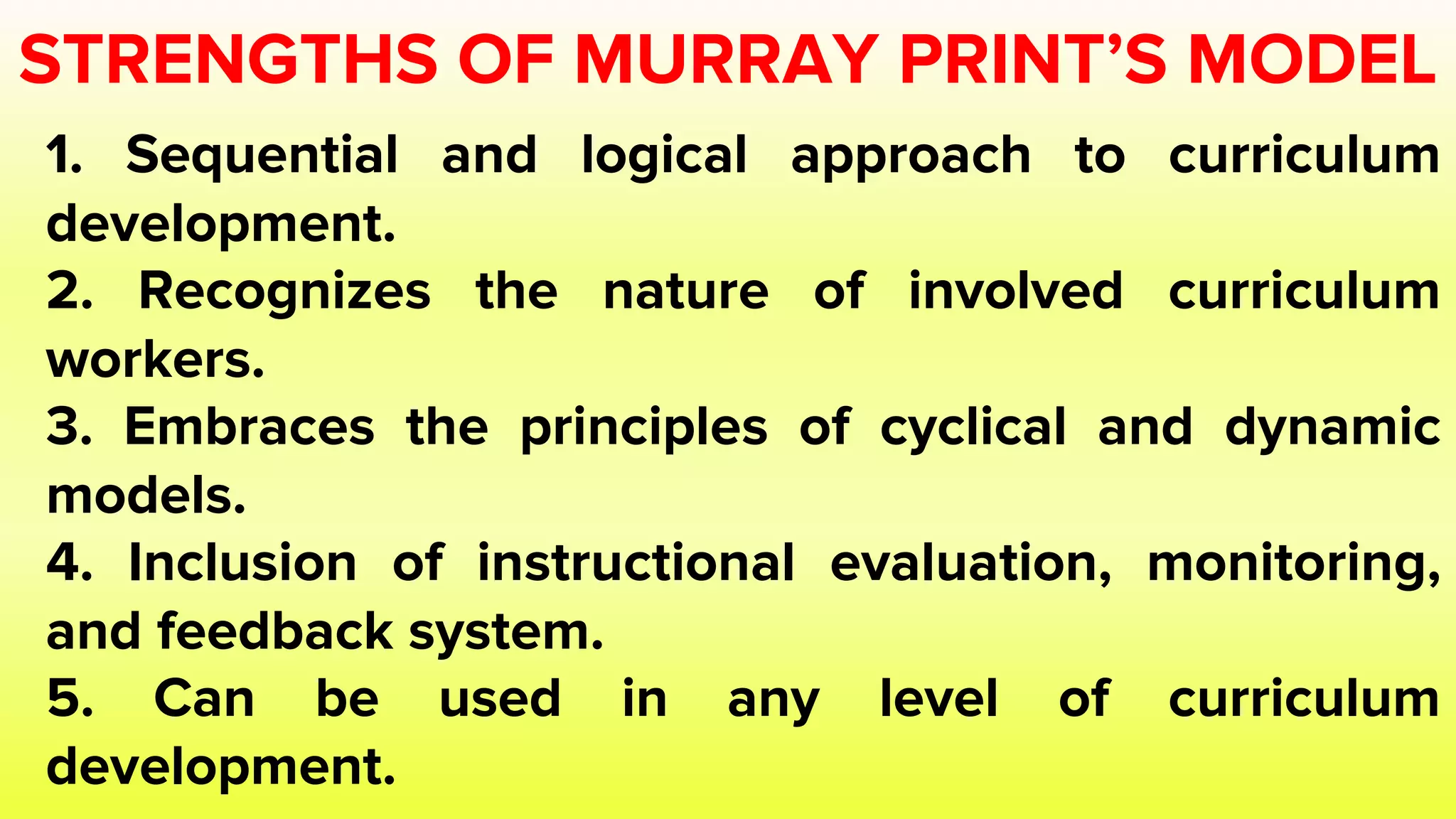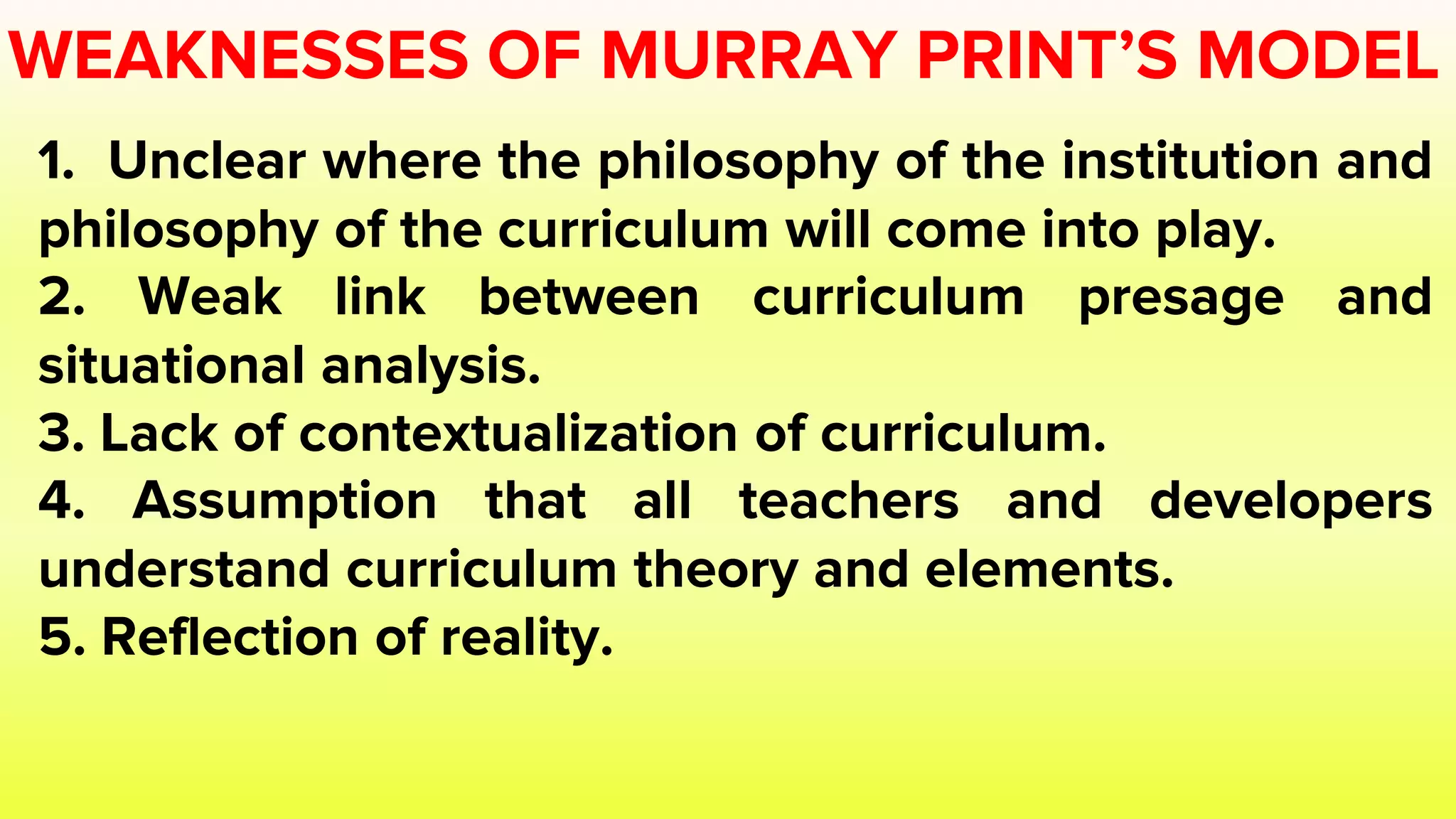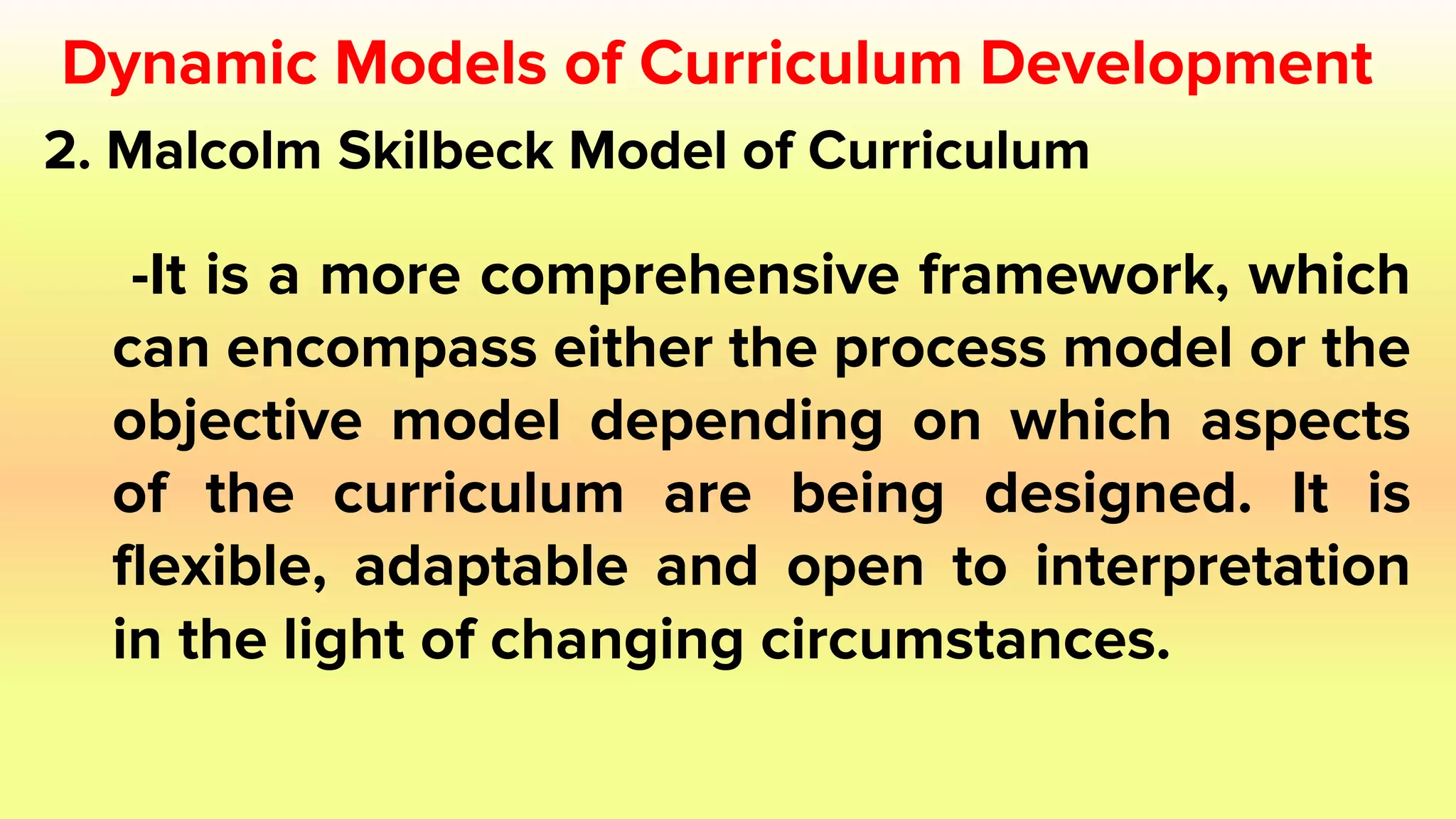This document discusses several models for curriculum development. It begins by explaining that curriculum development models help map out teaching, learning, and assessment approaches based on learner needs. It then describes Robert Diamond's Systematic Design model from 1989, which has two phases: project selection and production/implementation/evaluation for each unit. Another model discussed is Murray Print's model from 1988, which takes a sequential approach through phases. Finally, the document outlines dynamic models advocated by Walker, Skilbeck, and Stenhouse that view curriculum elements as flexible and interactive rather than linear.







































